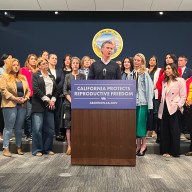For the first time in almost a year,mortgage rates are above 4%. While still low by historic standards — the annual average rate on a 30-year mortgage in 1981 was 16.63%, according to Freddie Mac — most observers expect rates to keep climbing in 2017. The increase, which is likely to be slow and steady for most of the year, will be driven by fiscal stimulus resulting from President Donald Trump’s policies, higher official rates as the Federal Reserve boosts the cost of borrowing in the face of faster economic growth, and rising bond market yields, experts say. Market rates spiked after Trump won the election, surprising many observers and forcing a rethink of expectations for the economy and markets. Then, the Fed raised rates Dec. 14, a widely expected move that reflected improved economic conditions and prospects for stronger growth next year. The 0.25 percentage point hike was the first increase in short-term interest rates in almost a year, and only the second time within the past 10years. » MORE: How to calculate your monthly mortgage payment
How high will mortgage rates go?
The good news is, economists, analysts and housing experts don’t expect an extreme spike in mortgage rates over the next year. Danielle Hale, managing director of housing research at the National Association of Realtors, predicts rates won’t rise too dramatically because expected potential gross domestic product growth in the future is still lower than what we’ve seen since the end of World War II. “Most economists expect right around 2, maybe a little higher than 2% growth,” Hale says, “whereas typically through most of that postwar period the average was 3%. The new normal is underperformance relative to the old normal. That should help keep rates lower than in the past. But I don’t think they’ll stay quite as low as they are now.” Rates are predicted to climb steadily this year, with three more bumps from the Fed as the economy keeps growing. Hale says that NAR expects to see rates averaging 4.6% for the fourth quarter of 2017. “But that means by the end of the year they could be as high as 4.7 or 4.8%, somewhere in that 4.5-to-5% range by the end of the year,” Hale says.
Here are four things that could happen under a Trump presidency that could keep rates heading in that direction.
1. Fiscal stimulus
Tax cuts and government spending are two Trump proposals that could lead to bigger deficits and a bigger debt load. This fiscal stimulus, paired with the stable employment we’re already seeing, could mean stronger economic growth, which could lead to higher mortgage rates. “If rates were to rise rapidly,” Hale says, “that probably indicates that inflation is coming in higher than expected, and that probably means that the Federal Reserve will act to move short-term rates higher even faster. That would spur long-term rates to move up a little bit faster.” “That could be OKif incomes are also rising, to help offset some of that increase,” she says. “But I don’t think that’s an ideal scenario. An ideal scenario would be continued moderate economic expansion, and rates that are stable to slightly higher.” 2. Privatizing government-sponsored enterprises
The odds of reforming government-sponsored enterprises like Fannie Mae and Freddie Mac to bring them out of government ownership have risen post-election, says Moody’s Analytics chief economist, Mark Zandi. He gives such reform a 50% chance. “It will be tough to get reform through Congress,” he says. “If there is reform, it will probably result in higher rates.” Jordan Levine, an economist with the California Association of Realtors, says it’s safe to say that privatizing Fannie and Freddie will increase rates because right now, with government ownership, the implicit guarantee that Uncle Sam stands behind the mortgage bonds they issue reduces the cost of capital for the private sector. “I can say with a pretty good level of confidence that it [privatizing Fannie and Freddie] will increase the cost of borrowing because there’s going to be more risk from those pools being borne by the private sector,” Levine says, “and they’re going to want to be compensated for that additional risk that they’re bearing.” 3. Deregulation
The Trump administration could ease up on tighter lending standards that have been the norm since the financial crisis. That would entail either minor changes to Dodd-Frank, a piece of legislation passed in response to the Great Recession, or a complete dismantling of it. Zandi thinks it’s unlikely the Consumer Financial Protection Bureau, which was created by the Dodd-Frank act, will be completely dismantled. Doing away with Dodd-Frank altogether is even more unlikely, according to Zandi. “Killing Dodd-Frank would mean getting rid of higher capital standards that the banks face.” Experts like Zandi and Levine say deregulation has less impact on mortgage rates than it does on the number of people who have access to credit.
4. Change at the Fed
Federal Reserve Chair Janet Yellen’s term ends in January 2018, giving Trump the opportunity to make a new appointment. But according to Zandi, a new Fed chair isn’t that important to mortgage rates. “For most borrowers, what matters is the 30-year fixed-rate mortgage,” he says. “That’s tied to long-term rates, and the Fed has less control over that.”
Hale says there’s a consensus at the Fed on the best way to approach making monetary policy, and she doesn’t expect a new chair to cause drastic change. “By the end of [Yellen’s] term, the Fed should be well on its way to a more normal monetary policy,” Hale says. “A new chair could come in and change that, but it’s not very likely.” What should you do about rising rates?
“Higher rates could have more of an effect than people think on the housing market,” Zandi says. Over the last 30 years, when people bought a home, they could get a mortgage rate that was lower than their existing mortgage, which helped increase home sales, he says. “Going forward, it’s going to be the reverse,” he says. “Mortgage rates are going to be higher on the home they want to buy relative to their current mortgage. That will make it less attractive for them to buy and sell. That probably means that housing activity will be less buoyant than it has been,” Zandi says. Levine, of the California Association of Realtors, suggests those who are thinking seriously about buying a home consider making a move sooner rather than later, if possible.
“If you’re thinking about getting into the market, it’s a good time to lock in rates before they go up higher,” Levine says. “If you’re thinking about selling 12 months from now, you might consider going a little bit early so that you can get locked in to a low rate on your new home.” If you’re on the fence about refinancing, it wouldn’t hurt to make a decision faster. If you have a floating rate mortgage, consider refinancing into a fixed-rate loan. You don’t want your ARM set much higher, unless you can financially handle an increase over the next year. If you have a home equity line of credit, which tends to come with adjustable rates, think about refinancing into a home equity loan with a fixed rate. And if you want to buy a home and can afford it, Zandi recommends you make sure you have a good credit score, that you’re managing your current debts well, and that you have enough money for a down payment. He says these factors are key to being able to apply for a mortgage and getting a reasonably good rate, regardless of where rates are heading. “That’s what’s in your control, that’s what you need to focus on,” Zandi says. More from NerdWallet Michael Burge is a staff writer at NerdWallet, a personal finance website. Email: mburge@nerdwallet.com.
The article 2017 Mortgage Rate Outlook: The Trump Effect originally appeared on NerdWallet.
The pros and cons of home equity lines of credit
How to refinance your mortgage
Compare mortgage rates
















